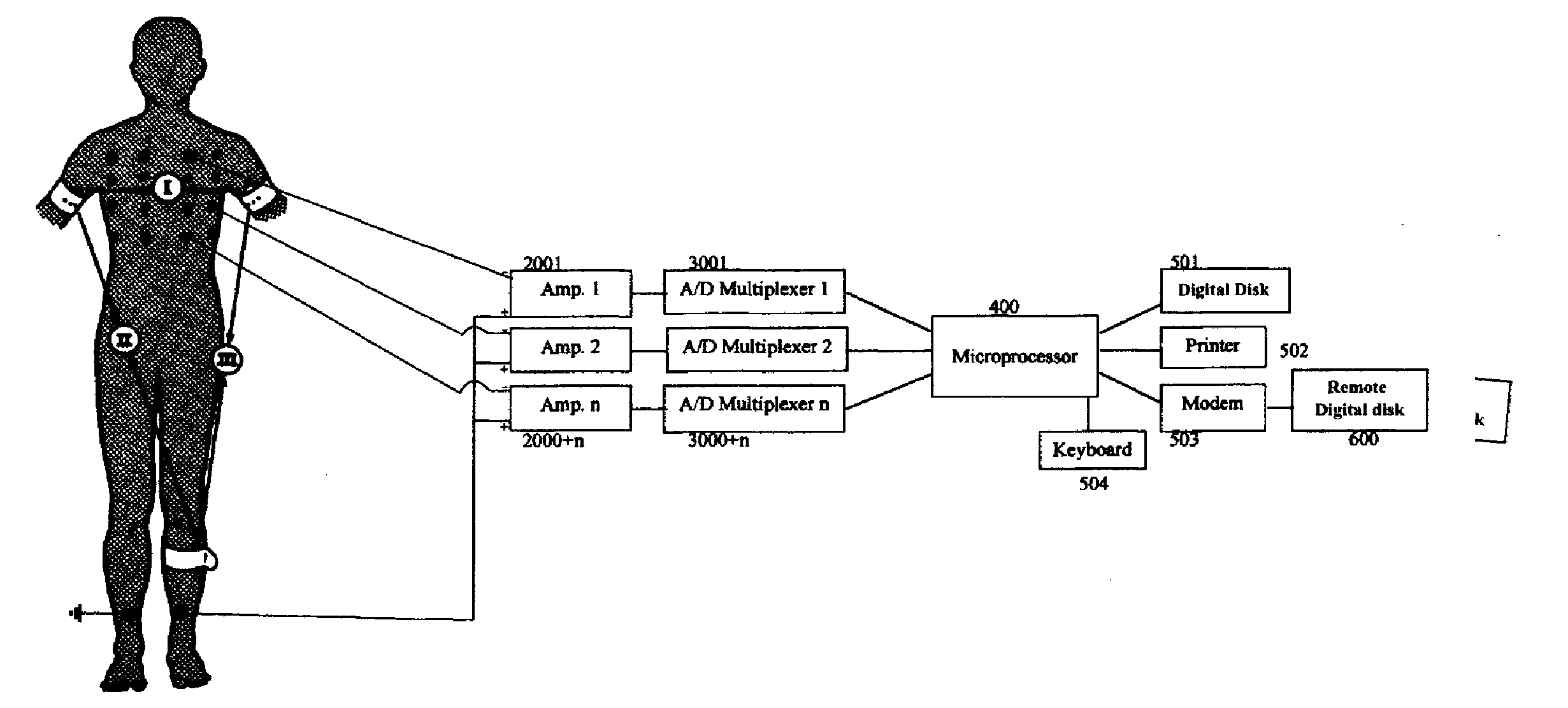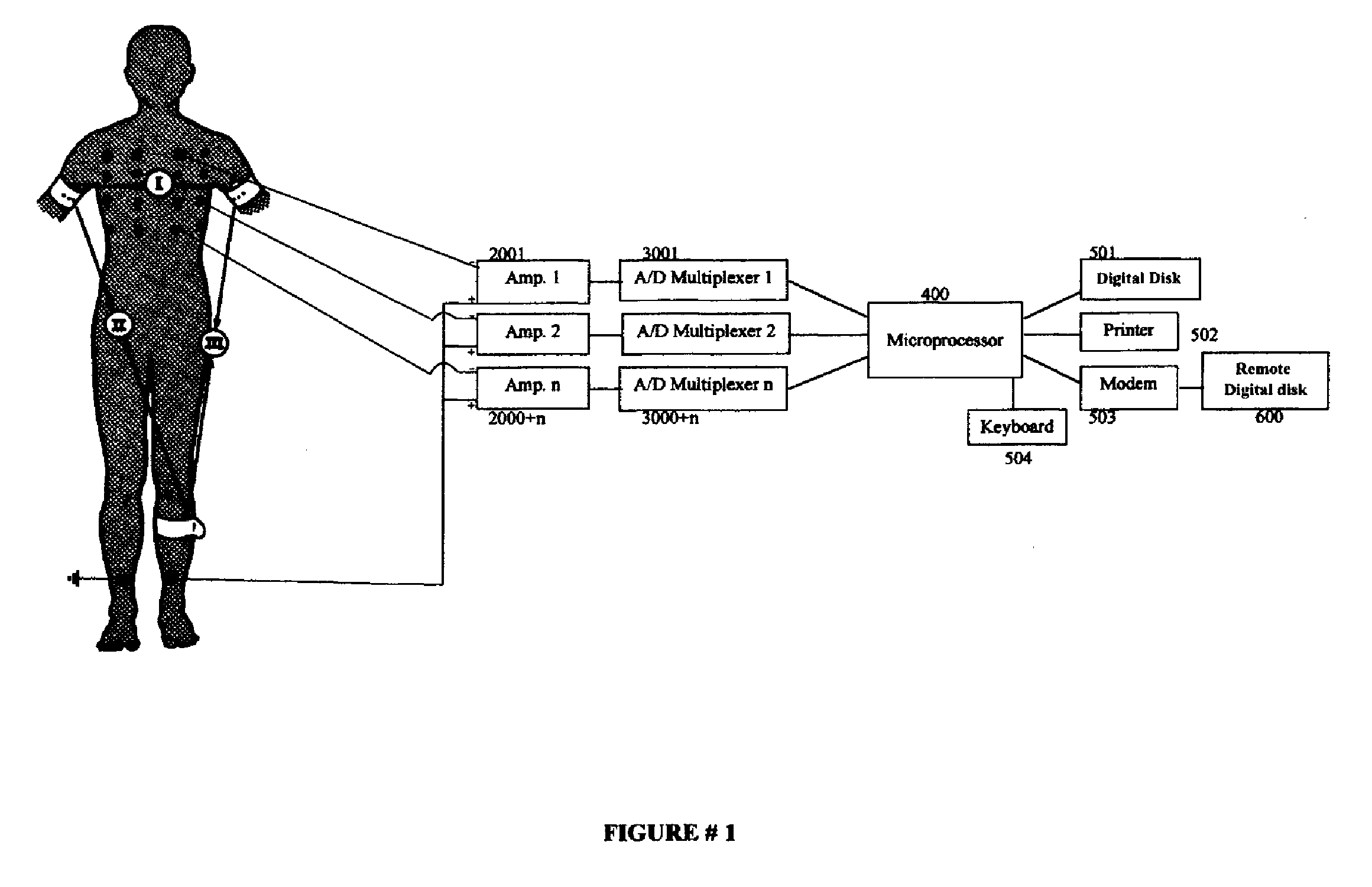Bipolar, Non-Vectorial Electrocardiography
a bipolar, non-vectorial technology, applied in the field of acquisition of electrocardiographic recordings, can solve the problems of unsustainableness of every hypothesis that depends on its absolute validity to be true, and achieve the effect of facilitating the recognition of changes, facilitating analysis, and enhancing the analysis
- Summary
- Abstract
- Description
- Claims
- Application Information
AI Technical Summary
Benefits of technology
Problems solved by technology
Method used
Image
Examples
first embodiment
[0096]FIG. 1 shows the present invention. As shown, the subject is positioned so that the cephalic two thirds of his torso is connected, through the desired number of electrodes n, to the “Exploring or negative Terminal” of amplifiers 1 to n and the left leg is connected to the “Common or positive Terminal” of amplifiers 1 to n to generate a “bipolar” electrocardiogram or first derivative. The figure, for simplicity, shows only three electrodes placed on the subject's chest and one electrode placed on the distal third of his left leg. A “Ground Electrode” is placed on the right leg to reduce the noise. Each high-gain, low-noise amplifier (2001−2000+n) has an input isolation switch to prevent current leakage to the subject.
[0097] Each amplifier is connected to its own individual Analog-to-Digital Multiplexer (3001−3000+n). The multiplexer will sample the n amplified analog bipolar electrocardiograms or first derivatives at a rate of around 100,000 samples per second with 12-bit resol...
second embodiment
[0108]FIG. 3 shows the present invention. To generate “unipolar” electrocardiograms the subject is positioned so that the cephalic two thirds of the torso and the leg are connected through electrodes to the desired number of “Exploring or Negative Terminals” and the “Common or Positive Terminal” of amplifiers 1 to n and F are connected to a “Constant Value Electrode”. The figure is simplified to show only three electrodes: 1, 2 and n. [0109] (1) The electrodes are connected to the “Exploratory or negative Terminal” of each individual high-gain, low-noise, input-switch-insulated amplifiers (20001 to 2000+n). The positive terminals of the amplifiers are connected to the “Constant Value Electrode”. [0110] (2) The amplified analog electrocardiographic traces are fed to individual analog / digital multiplexers (3001 to 3000+n) that will sample them at a rate of 100,000 per second with 12-bit resolution. [0111] (3) The first stage is a Digital Filter (401) with two-band pass filters between...
PUM
 Login to View More
Login to View More Abstract
Description
Claims
Application Information
 Login to View More
Login to View More - R&D
- Intellectual Property
- Life Sciences
- Materials
- Tech Scout
- Unparalleled Data Quality
- Higher Quality Content
- 60% Fewer Hallucinations
Browse by: Latest US Patents, China's latest patents, Technical Efficacy Thesaurus, Application Domain, Technology Topic, Popular Technical Reports.
© 2025 PatSnap. All rights reserved.Legal|Privacy policy|Modern Slavery Act Transparency Statement|Sitemap|About US| Contact US: help@patsnap.com



